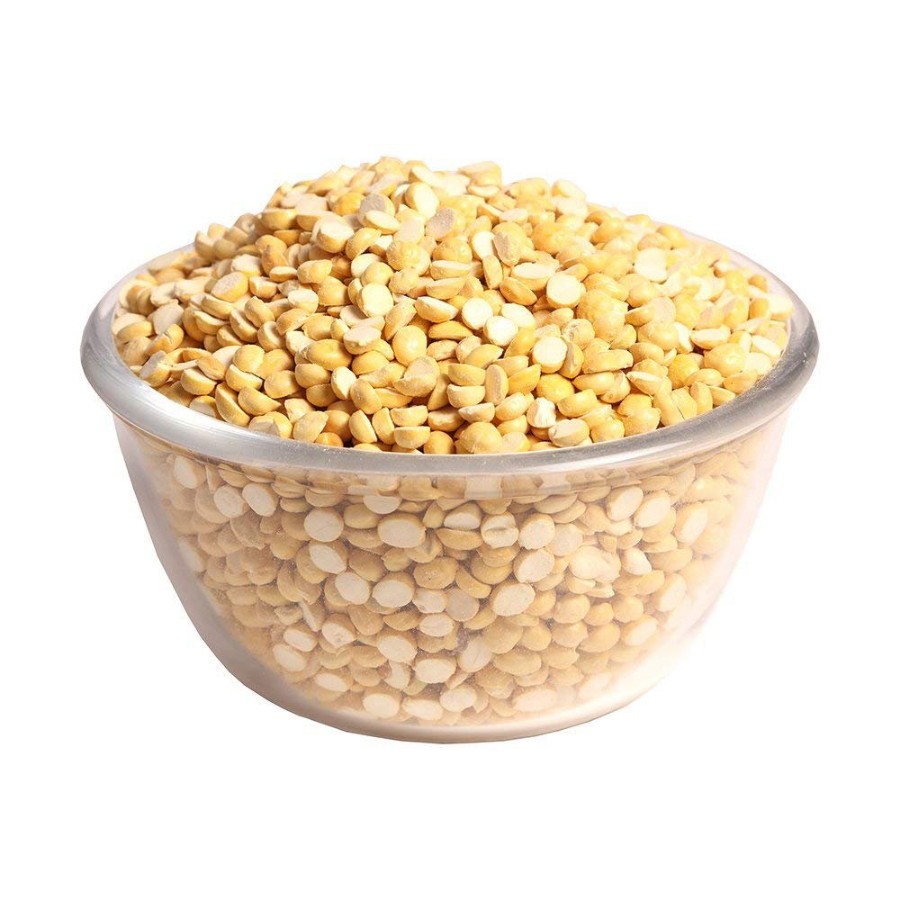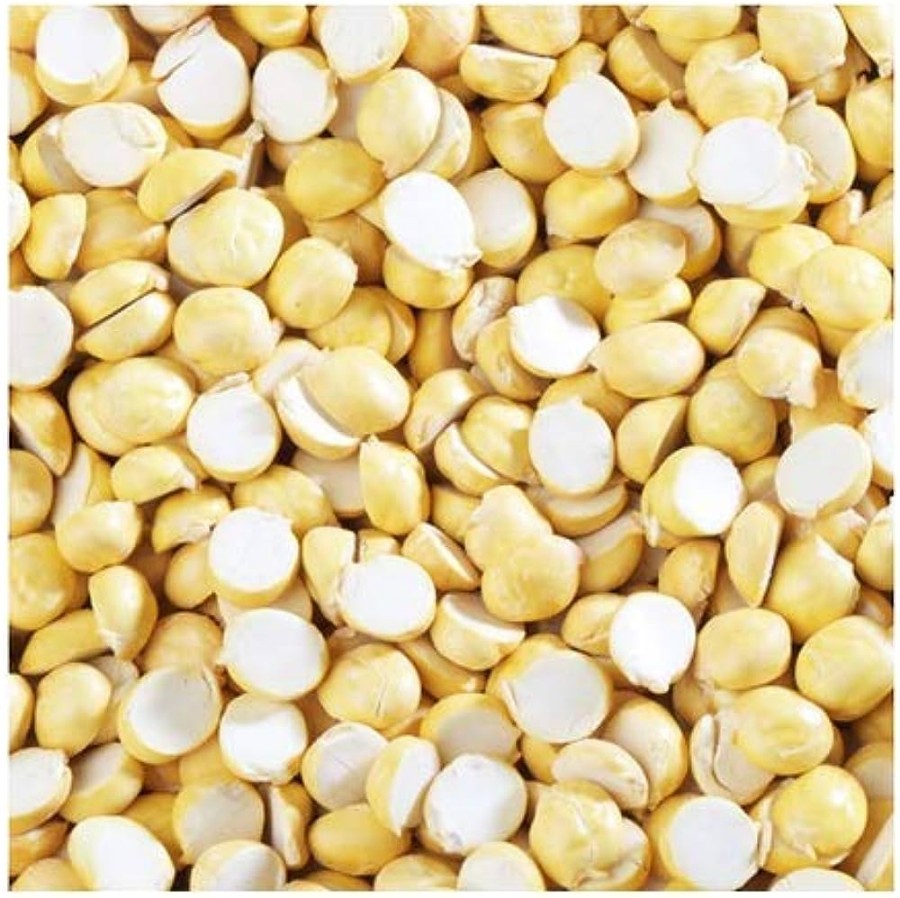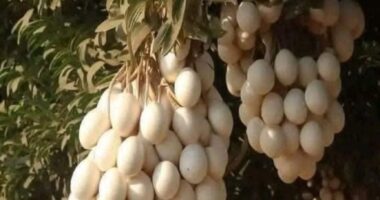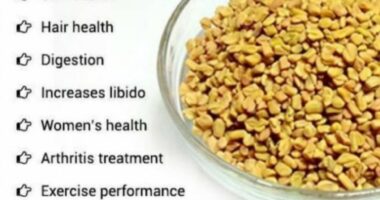When it comes to satisfying our snack cravings, there’s nothing quite like pottukadalai, also known as roasted chana dal or Bengal gram. Pottukadalai is a versatile ingredient that has gained immense popularity for its delectable taste and numerous health benefits. In this article, we’ll delve into the origins of pottukadalai, its nutritional value, culinary uses, and more. So, let’s embark on a flavorful journey through the world of pottukadalai!

The History of Pottukadalai
It has a rich history that dates back centuries. Originating in the Indian subcontinent, it has been an integral part of traditional cuisine. The process of roasting and seasoning chana dal has been passed down through generations, resulting in the creation of the beloved roasted gram .
Pottukadalai, derived from split chickpeas, is a popular ingredient in Indian cuisine. Its name translates to “roasted gram” in Tamil, which aptly describes its preparation process. These legumes are cleaned, roasted, and then split into two parts, revealing their signature nutty taste and crunchy texture.
Nutritional Goodness in Every Crunch
It isn’t just a flavorful snack; it’s also a nutritional powerhouse. Packed with protein, fiber, and essential nutrients like iron, potassium, and B-vitamins, this bite-sized snack offers a range of health benefits. Let’s dive deeper into the nutrition goodness of pottukadalai:
Protein-Packed Perfection:
With its impressive protein content, it stands as an excellent plant-based protein source. Proteins are the building blocks of the body, crucial for repairing tissues, supporting immune function, and maintaining healthy hair and nails. Incorporating this dal into your diet provides an easy way to boost your protein intake, especially for those following vegetarian or vegan lifestyles.
Fiber for Digestive Wellness:
Fiber plays a pivotal role in promoting healthy digestion and preventing digestive discomfort. It is rich in dietary fiber, aiding in regular bowel movements and preventing constipation. Moreover, fiber contributes to a feeling of fullness, which can help control overeating and support weight management goals.
Iron-Rich Nutrient Boost:
Iron is an essential mineral that supports the transportation of oxygen throughout the body and plays a key role in energy production. It contains a notable amount of iron, making it a valuable dietary addition, especially for individuals prone to iron deficiency or anemia. Including pottukadalai in your meals can help maintain optimal energy levels and overall well-being.
Potassium for Heart Health:
It is also a good source of potassium, an electrolyte that assists in maintaining fluid balance, regulating blood pressure, and supporting proper muscle and nerve function. Adequate potassium intake is associated with reduced risk of hypertension and cardiovascular diseases. Enjoying pottukadalai can contribute to overall heart health and well-being.
B-Vitamins for Vitality:
B-vitamins are a group of water-soluble vitamins that play crucial roles in various bodily functions, including energy metabolism, nerve function, and cell production. Pottukadalai contains several B-vitamins, including thiamin (B1), riboflavin (B2), niacin (B3), and folate (B9). These vitamins are essential for converting food into energy and supporting the health of your skin, eyes, and nervous system.
Incorporating pottukadalai into your diet can offer a diverse array of nutritional benefits that contribute to your overall health and vitality. Whether you’re looking to boost your protein intake, enhance digestion, or support heart health, pottukadalai proves to be a versatile and nutrient-rich addition to your culinary repertoire.
Culinary Versatility
From classic South Indian dishes like chutneys and podis to innovative salads and wraps, it has a wide range of culinary uses. Its versatility lies in its ability to enhance both the taste and nutrition of various dishes.
Health Benefits of Pottukadalai
Pottukadalai, also known as roasted gram or chana dal, isn’t just a delicious snack; it’s a nutritional powerhouse that offers a wide array of health benefits. From protein-packed goodness to digestive support, let’s explore the ways in which pottukadalai can contribute to your overall well-being:
- Rich in Protein: Pottukadalai is an excellent plant-based source of protein. Protein is essential for various bodily functions, including tissue repair, muscle development, and immune support. Incorporating protein-rich foods like pottukadalai into your diet helps maintain and build lean muscle mass.
- Fiber for Digestive Health: With its notable fiber content, pottukadalai plays a pivotal role in supporting healthy digestion. Dietary fiber adds bulk to stool, promoting regular bowel movements and preventing constipation. It also supports a healthy gut microbiome, which is essential for overall digestive wellness.
- Weight Management Ally: Foods that are high in fiber and protein, like this dal , can help you feel fuller for longer periods, aiding in appetite control and weight management. Including pottukadalai as a snack or in your meals can contribute to a balanced and satisfying diet.
- Nutrient Boost: It is a source of essential vitamins and minerals, including iron, potassium, phosphorus, and B-vitamins such as folate. Iron is crucial for oxygen transport in the body, while potassium supports heart health and fluid balance. B-vitamins play roles in energy metabolism and nerve function.
- Blood Sugar Management: The low glycemic index of pottukadalai means it has a minimal impact on blood sugar levels when consumed. This makes it a favorable choice for individuals with diabetes or those aiming to stabilize their blood sugar levels.
- Heart-Healthy Snacking: The combination of fiber, protein, and heart-healthy nutrients in roasted gram contributes to cardiovascular well-being. Fiber helps lower cholesterol levels, while potassium supports healthy blood pressure levels. Including this snack in your diet can promote heart health.
- Nutritional Support for Anemia: Anemia, characterized by low hemoglobin levels, can lead to fatigue and weakness. Roasted gram contains iron, a vital nutrient for hemoglobin production. Including it in your diet can help prevent iron deficiency and support overall energy levels.
- Antioxidant Content: Pottukadalai contains antioxidants, which help protect cells from oxidative stress and damage caused by free radicals. These antioxidants contribute to overall cellular health and may have a positive impact on long-term well-being.
- Bone Health Booster: Phosphorus and other minerals in this dal play a role in maintaining strong and healthy bones. Combining it with calcium-rich foods in your diet can contribute to optimal bone health.
- Support for Vegetarian Diets: For individuals following vegetarian or vegan diets, this dal serves as a valuable source of plant-based protein and essential nutrients that might otherwise be obtained from animal products.
- Snacking with a Purpose: Instead of reaching for processed snacks that are high in empty calories and unhealthy fats, opt for pottukadalai. It satisfies your snack cravings while providing nourishment and energy.
Innovative Uses of Pottukadalai
While pottukadalai is a beloved ingredient in traditional recipes, its versatility extends to modern and inventive culinary applications. Let’s explore some innovative ways to make the most of this nutty delight:
- Pottukadalai Energy Bars: Create your own homemade energy bars by combining blended this dal with dried fruits, nuts, and a touch of honey. Press the mixture into a pan, refrigerate until firm, and then cut into bars. These energy bars provide a convenient and nutritious snack for those on the go.
- Pottukadalai-Coated Fruits: Dip fresh fruits like banana slices, apple wedges, or strawberries into melted dark chocolate and then roll them in crushed roasted gram . Allow them to set in the refrigerator for a delectable and crunchy treat that balances sweetness with nuttiness.
- Pottukadalai-Crusted Chicken: For a unique twist on a classic dish, use powdered pottukadalai as a coating for chicken cutlets. Dip the chicken in egg wash and then coat it with a mixture of powdered pottukadalai, breadcrumbs, and spices. Bake or pan-fry until crispy and golden for a protein-packed entrée.
- Pottukadalai Granola: Elevate your morning routine by making a batch of pottukadalai granola. Combine rolled oats, nuts, seeds, and crushed roasted gram in a bowl. Drizzle with honey and bake until golden brown. Enjoy it with yogurt or milk for a hearty and nutritious breakfast.
- Pottukadalai-Stuffed Parathas: Incorporate roasted gram into the stuffing of your parathas for an unexpected crunch and flavor burst. Mix the crushed roasted gram with spices, minced vegetables, and a bit of grated cheese, then stuff it into the paratha dough before rolling and cooking.
- Pottukadalai Chocolate Bark: Melt dark chocolate and spread it onto a parchment paper-lined tray. Sprinkle crushed roasted gram , dried cranberries, and a pinch of sea salt on top. Allow it to set in the refrigerator before breaking it into shards. This sweet and savory chocolate bark is a delightful indulgence.
- Pottukadalai Hummus: Add a nutty twist to your traditional hummus by blending roasted gram into the mixture. The result is a creamy dip with a unique flavor profile that pairs perfectly with vegetable sticks, pita bread, or whole-grain crackers.
- Pottukadalai Veggie Burgers: For a plant-based burger patty with a crunch, combine mashed beans or lentils with finely crushed roasted gram . Add spices, herbs, and breadcrumbs, then shape into patties and cook until golden brown. Serve in buns with your favorite toppings.
- Pottukadalai Dosa Batter: Enhance your dosa batter by incorporating powdered roasted gram . This addition not only enriches the nutritional content but also imparts a delightful nutty flavor to your dosas.
- Pottukadalai Pesto: Whip up a unique pesto by blending roasted gram with fresh basil, garlic, olive oil, and a bit of Parmesan cheese. This pesto can be tossed with pasta, spread on sandwiches, or used as a dip for veggies.
Roasted Chana Dal Chutney Recipe
One of the most popular uses of pottukadalai is in chutney preparation. Here’s a simple recipe for Roasted Chana Dal Chutney:
Ingredients:
- 1 cup pottukadalai
- 2-3 green chilies
- A small piece of tamarind
- Salt to taste
- Water as needed
- Seasoning: mustard seeds, curry leaves, hing, and oil
Instructions:
- Grind pottukadalai, green chilies, tamarind, and salt with water to make a smooth paste.
- In a pan, heat oil and add mustard seeds. Once they splutter, add curry leaves and hing.
- Pour the seasoning over the chutney and mix well. Your pottukadalai chutney is ready to be enjoyed with dosa or idli!
These innovative uses of this dal showcase its adaptability and ability to add a distinct touch to a wide range of dishes. Whether you’re craving a sweet indulgence or seeking a savory enhancement, this nutty ingredient is your ally in culinary exploration.
Incorporating Pottukadalai into Your Diet

Pottukadalai is not only a delightful snack but also a versatile ingredient that can be seamlessly integrated into various dishes to enhance their taste, texture, and nutritional value. Whether you’re looking to add a protein punch, elevate your meal’s crunch factor, or simply explore its rich flavor, it offers numerous creative ways to spruce up your diet. Here are some inventive ways to incorporate this nutty delight into your everyday meals:
- Wholesome Breakfast Bowl: Elevate your morning routine by adding roasted gram to your breakfast bowls. Whether you’re enjoying oatmeal, yogurt, or acai bowls, this ingredient adds a delightful crunch and a dose of protein to kick-start your day.
- Trail Mix Medley: Create a wholesome and energizing trail mix by combining roasted gram with an assortment of nuts, seeds, and dried fruits. This mix offers a satisfying blend of textures and flavors, making it a perfect on-the-go snack or a quick pick-me-up during your busy day.
- Nutty Nut Butter: Elevate your morning toast game by preparing a unique nut butter alternative using roasted gram . Blend it into a smooth paste with a touch of honey, a pinch of salt, and a drizzle of oil. Spread this delectable nutty creation on whole-grain bread or rice cakes for a nutritious and delicious start to your day.
- Crunchy Salad Topper: Transform your salads from mundane to magnificent by sprinkling crushed or whole roasted gram on top. The nutty flavor and satisfying crunch will complement the freshness of your greens, creating a harmonious balance of taste and texture.
- Smoothie Booster: Elevate your post-workout or breakfast smoothies by incorporating powdered pottukadalai. This addition not only enhances the protein content of your smoothie but also lends it a creamy consistency. Blend it with fruits, yogurt, and a liquid of your choice for a nutrient-packed beverage.
- Flavorful Dip Enhancer: Give your favorite dips, such as hummus or guacamole, a unique twist by incorporating roasted and powdered pottukadalai. This addition adds depth to the flavor profile while contributing a delightful texture that’s perfect for scooping with veggies, crackers, or pita bread.
- Delectable Desserts: Explore the world of innovative desserts by adding roasted and powdered pottukadalai to your sweet treats. Whether you’re making energy balls, homemade granola bars, or even chocolate truffles, this ingredient can introduce a nutty undertone and enhance the overall richness.
- Culinary Coating: Use powdered pottukadalai as a nutritious coating for baked or pan-fried dishes. Whether you’re preparing chicken tenders, fish fillets, or tofu nuggets, this coating adds a crispy texture and a hint of nutty flavor to your dishes.
- Unique Nutty Crumbs: Create a gluten-free alternative to breadcrumbs by grinding roasted gram into fine crumbs. These nutty crumbs can be used as a topping for casseroles, pasta dishes, and gratins, providing a flavorful and crunchy layer.
- Savory Spread Sensation: Experiment with a savory spread by combining roasted gram with herbs, spices, and a drizzle of olive oil. This spread can be used as a dip for crackers, a sandwich filling, or a base for vegetable wraps.
Pottukadalai’s Role in Traditional Medicine
In traditional medicine practices, it is believed to have medicinal properties. It’s often used to aid digestion, reduce inflammation, and regulate blood sugar levels. While it’s not a replacement for medical treatments, it’s intriguing to explore the holistic applications of this humble ingredient.
From Traditional to Modern: Pottukadalai’s Journey
While roasted gram has deep roots in traditional Indian snacks, it has also found its way into modern cuisine. Chefs and home cooks alike are experimenting with this ingredient to create innovative and delectable dishes. From pottukadalai-coated chicken nuggets to pottukadalai-studded chocolate bars, the possibilities are endless.
Pottukadalai and Its Culinary Significance
In South Indian households, it is a staple ingredient used in various recipes. Its unique flavor and crunchiness elevate the taste of dishes, making it an irreplaceable element in the culinary world. The simple addition of roasted gram can turn a plain dish into a delightful culinary experience.
Roasted gram’s appeal extends beyond India. In other parts of the world, similar legumes are used in diverse ways, showcasing the global significance of this ingredient. In Mediterranean cuisine, roasted chickpeas are a popular snack, highlighting the universality of the love for crunchy legumes.
The roasting process plays a crucial role in determining the flavor and texture of this dal. Achieving the perfect balance of crispiness and nuttiness requires skill and attention. Traditionally, pottukadalai is roasted in sand, which imparts a distinct smokiness to the legumes.
Whether you’re watching a movie or catching up with friends, it makes for an ideal snack that’s not just delicious but also fun to munch on. Its addictive crunch can instantly uplift your mood and provide a quick energy boost during your busy day.
Pottukadalai’s Role in Sweet Treats
Beyond its savory applications, it finds its way into various sweet delicacies. Its ability to add texture and flavor to desserts is truly remarkable. From laddus to burfis, the inclusion of powdered roasted gram brings a unique twist to traditional Indian sweets.
Pottukadalai: A Perfect Tea-Time Partner
Pair your evening tea with the satisfying crunch of roasted gram. It’s a guilt-free snack that can brighten up your tea-time experience. Its nutty undertones complement the warmth of tea, creating a delightful harmony of flavors.
Making Pottukadalai at Home
Creating your own pottukadalai is a rewarding experience. With a few simple steps, you can enjoy freshly roasted and customized this dal at home. Start by cleaning and drying the chickpeas, then roast them in a pan until they turn golden brown. Allow them to cool and store them in an airtight container for a convenient homemade snack.
In conclusion, pottukadalai is a delightful ingredient that brings together flavor, nutrition, and culinary creativity. Whether you enjoy it as a snack or incorporate it into your meals, its versatility knows no bounds. From its rich history in traditional Indian cuisine to its modern culinary applications, this dal continues to captivate taste buds around the world.
FAQs
Can I use pottukadalai in gluten-free recipes?
Absolutely! this is naturally gluten-free, making it a great choice for gluten-sensitive individuals. You can use it to create gluten-free batters, coatings, and even as a topping for salads and yogurt bowls.
Is pottukadalai suitable for a weight loss diet?
Yes, it’s protein and fiber content can aid in weight management by promoting a feeling of fullness. Its nutritional profile makes it a satisfying and healthy snack option.
Can I give pottukadalai-based snacks to children?
While this is nutritious, it’s advisable to introduce it to children in moderation due to its crunchy texture. Opt for finely ground or crushed roasted gram for younger children to prevent any choking hazards.
What is the shelf life of roasted pottukadalai?
Properly stored in an airtight container, roasted gram can stay fresh and crunchy for several weeks. To extend its shelf life, ensure it’s kept in a cool and dry place, away from direct sunlight and moisture.
Where can I buy premium quality pottukadalai?
You can find high-quality roasted gram at local grocery stores, supermarkets, and online food retailers. Look for reputable brands that offer roasted and unroasted options to suit your culinary needs.





